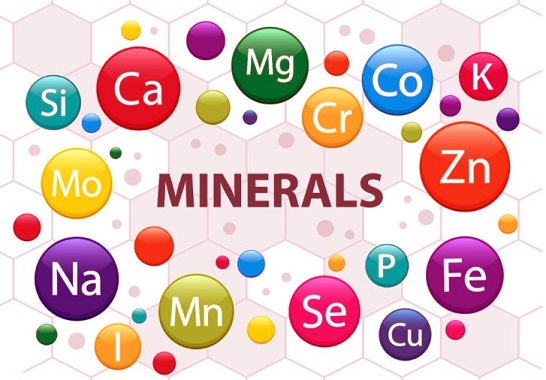Nikhil Prasad Fact checked by:Thailand Medical News Team Feb 28, 2025 1 month, 2 weeks, 6 days, 9 hours, 6 minutes ago
Medical News: New Study Reveals Lasting Changes in Essential Metals Among Recovered Patients
As the world continues to grapple with the COVID-19 pandemic, attention is increasingly turning to the long-term health effects experienced by those who have recovered from the virus. A recent study conducted by researchers from the University of Chinese Academy of Sciences, Shenzhen Institute of Advanced Technology, and Renmin Hospital of Wuhan University in China has shed light on a previously underexplored aspect: the body's metal balance, or metallome, and how it is affected long after recovery from SARS-CoV-2 infection.
 Long-Term Impact of COVID-19 on Body's Metal Balance
Understanding Metallomics and Its Importance
Long-Term Impact of COVID-19 on Body's Metal Balance
Understanding Metallomics and Its Importance
Metallomics is the comprehensive study of the roles, functions, and interactions of metal ions in biological systems. Essential metals such as iron (Fe), copper (Cu), zinc (Zn), and selenium (Se) are vital for numerous bodily functions, including oxygen transport, immune response, and enzyme function. An imbalance in these metals can lead to various health issues. This
Medical News report delves into how COVID-19 may cause such imbalances, persisting even months after recovery.
The Study at a Glance
The research team conducted a cross-sectional study involving 25 individuals who had recovered from mild to moderate COVID-19 infections and had been discharged from the hospital for six months. These participants were compared to a control group of 38 healthy individuals. Blood samples were analyzed to measure the concentrations of 14 different metals: Fe, Cu, Zn, Se, chromium (Cr), manganese (Mn), barium (Ba), nickel (Ni), lead (Pb), silver (Ag), arsenic (As), cadmium (Cd), cobalt (Co), and vanadium (V).
Key Findings
The study revealed significant differences in metal concentrations between the recovered individuals and the healthy controls:
-Increased Metal Levels: Recovered participants exhibited higher concentrations of Cu, Ag, As, Ba, Cd, Ni, Pb, Cr, and V.
-Decreased Metal Levels: Levels of Fe and Se were notably lower in the recovered group.
These disparities were found to vary based on age and gender, suggesting that demographic factors may influence how COVID-19 affects metal balance.
Implications of Metal Imbalance
The observed alterations in metal concentrations have several potential health implications:
-Copper (Cu): Elevated Cu levels can disrupt immune function and may contribute to inflammatory conditions.
-Iron (Fe): Reduced Fe levels can lead to anemia, characterized by fatigue and weakened immunity.
-Selenium (Se): Lower Se levels are associated with compromised antioxidant defenses, making the body more susceptib
le to oxidative stress.
-Heavy Metals (As, Cd, Pb, etc.): Increased levels of these toxic metals can have various adverse effects, including kidney damage, neurological issues, and increased cancer risk.
Potential Mechanisms
The exact mechanisms by which SARS-CoV-2 infection leads to these lasting changes in metal homeostasis are not fully understood. However, several hypotheses have been proposed:
-Viral Interaction: The virus may directly interact with metal-binding proteins, altering their function and distribution.
-Inflammatory Response: The body's immune response to the virus could cause the release of metals from tissues into the bloodstream, disrupting normal balance.
-Organ Damage: Damage to organs such as the liver and kidneys, which play crucial roles in metal metabolism and excretion, could lead to accumulation or depletion of certain metals.
Conclusions
This study provides compelling evidence that SARS-CoV-2 infection can cause long-lasting disruptions in the body's metal balance, persisting at least six months post-recovery. These imbalances may have significant health implications, potentially affecting metabolic processes, organ function, and overall well-being.
The findings underscore the importance of monitoring metal levels in recovered COVID-19 patients and suggest that addressing these imbalances could be a crucial component of post-COVID-19 healthcare strategies.
The study findings were published in the peer-reviewed Journal of Trace Elements in Medicine and Biology.
https://www.sciencedirect.com/science/article/abs/pii/S0946672X25000380
For the latest
COVID-19 News, keep on logging to Thailand
Medical News.
Read Also:
https://www.thailandmedical.news/news/breaking-covid-19-news-indian-study-finds-dysregulated-metal-ion-homeostasis-in-cd8-and-cd4-t-cells-of-covid-19-positive-individuals
https://www.thailandmedical.news/news/the-hidden-role-of-metals-in-cancer-a-double-edged-sword
https://www.thailandmedical.news/news/the-role-of-zinc-copper-and-calcium-in-brain-health-and-vascular-type-senile-dementia
https://www.thailandmedical.news/pages/thailand_doctors_listings
